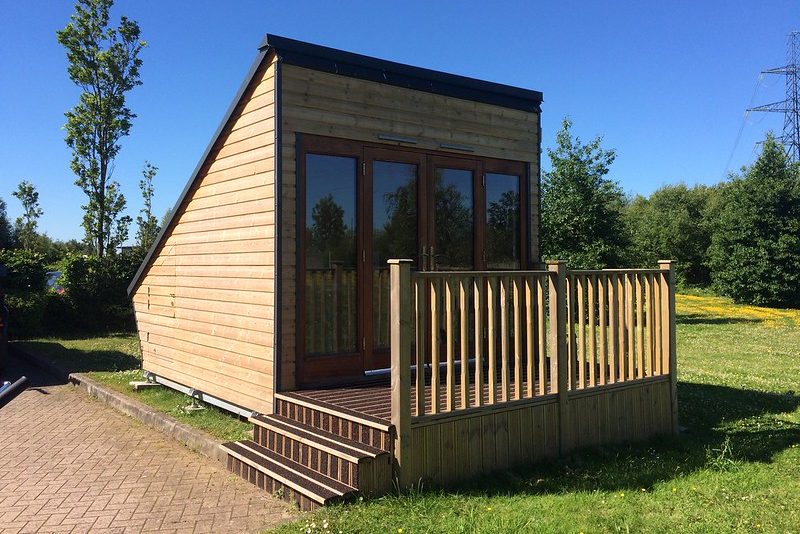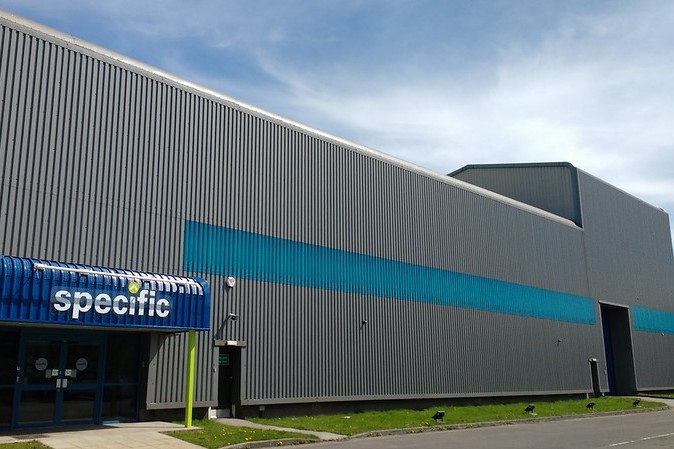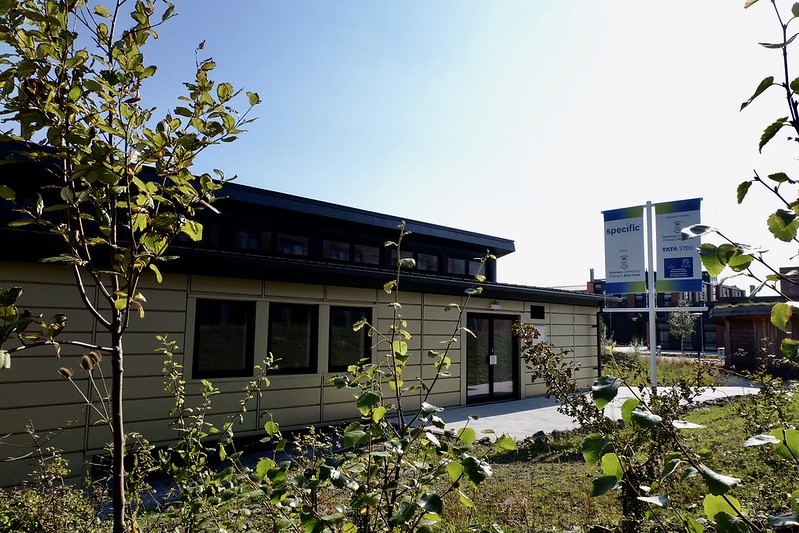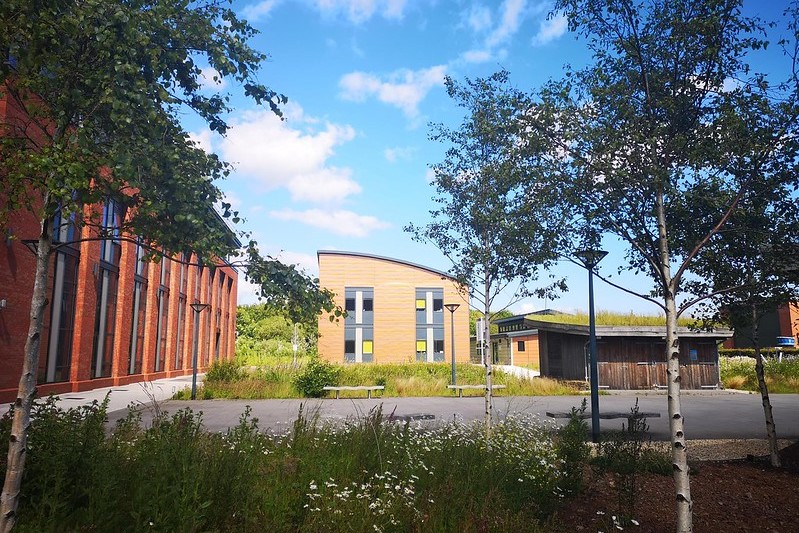Purpose
When we moved into the world of building demonstration back in 2014, constructing our first building demonstrator – the Active Pod – the aim was to demonstrate the Active Building (or “Buildings as Power Stations”) concept in an appropriate format to enable engagement with construction industry stakeholders. The hope was that this would encourage adoption of the Active Building concept by others. SPECIFIC’s research, centred around solar energy, had the potential to truly support a low carbon built environment, but we needed a way to influence those responsible for building projects to adopt the concept and the novel technologies being developed – and we thought building demonstration could be the answer.
Demonstrating technology prototypes in isolation doesn’t allow potential users of the technologies to experience them in a real-life setting and hence demonstrate their full capabilities. Also, without testing new technologies on buildings, it is very difficult to assess their contributions to reducing the energy consumption and carbon emissions of buildings. Building demonstration was the logical next step for SPECIFIC, propelling the research work already underway into the complex world of buildings.
Value
What we hadn’t realised at this time was the value the building demonstrators would have in evolving the research undertaken at SPECIFIC and by other organisations.
It is one thing demonstrating a technology works at a prototype level, but how this technology will perform when connected into a building services strategy, where it will be part of a wider power, heating, ventilation or hot water system is a completely different challenge. This is before considering how the technologies integrate into building fabric and architectural design. All of these intricacies are what I find so exciting about the work we do and the building demonstrators we create.
There is also the issue of how project design and delivery teams can design and construct buildings to accommodate innovative technologies, some of which may not have been used on a building project previously, or may not be known to the designers and installers. The risks involved in incorporating novel technologies with no historical data to prove their efficacy cannot be borne by most; the foremost aim of most building projects being to provide a comfortable shelter for occupants, whether they be homeowners, office workers or students, for example.
This is where we, as a research organisation, have been able to help. Our building demonstrators have provided a valuable platform for companies wishing to showcase their novel technologies without the fear of failure and disappointment. And, we have been able to do so in a safe environment, where occupants are aware of the experimental nature of the buildings and hence a little more forgiving if things don’t operate quite as intended!
Contribution to a low carbon society
Once the buildings are in operation, we monitor the technologies and, crucially how they perform as part of the whole building system. I find the use of data for improved building performance, including fast fault finding and optimisation of systems, hugely important and believe this could be transformational in reducing the well documented “performance gap” between building design and construction. I also see this use of data as a valuable tool to drive the construction industry forward to meet the UK’s net zero carbon and energy reduction targets; and our global commitments to climate change.
In addition to the benefits mentioned above, the unique aspect of an Active Building, when compared with other ‘green’ building labels, is its ability to interact with energy networks to provide energy-flexibility through the use of energy storage and smart controls, such that it does not place an increased burden on the existing energy infrastructure, instead supporting it through careful control of energy flows to and from the grid.
Our demonstrators also show how higher levels of renewable energy can be utilised by employing flexible energy distribution systems. This flexibility is necessary to ensure the existing energy infrastructure can cope with the increase in power demand from electric vehicles (EVs) and electrical heating systems; and conversely the import of energy from unpredictable renewable energy sources. Deploying intelligent control systems and energy storage, to enable buildings to help balance the energy system is critical if the UK is to meet its decarbonisation targets for transport and heating of buildings.
Company engagement
In addition to showcasing new technologies developed by companies, such as the BIPVCo roof on the Active Classroom; and the PV-T tubes by Naked Energy installed on the Active Office; the buildings have enabled us to collaborate with other companies to test new products or concepts. Just some of the examples include:
- The Flexible Responsive Energy Demand (FRED) project, which investigated use of Demand Side Response (DSR) strategies to control the exchange of power to and from the grid, helping to reduce the strain of our existing grid infrastructure.
- A project with start-up company, Measurable, where we tested their smart sockets in the Active Classroom, whilst it was being used as a building contractor’s site office. These allow control and monitoring of energy consumption to identify energy savings that can be made.
- A company called Matterport, created a virtual tour of our Active Buildings, enabling us to continue our external engagement during a prolonged period of home working.
Collaborative research tools
Another thing the building demonstration programme has enabled is continued collaborative research projects within Swansea University and with other academic partners. One example is our continued collaboration with the University of Bath, where a PhD student project is focused on assessing the whole life carbon impact of our award-winning Active Classroom and Active Office, including their eventual deconstruction. The buildings have been the subject of many student projects since they were constructed.
My own doctoral research project is based on our building demonstrators, focused on developing an Active Building Toolkit, which can be used by others embarking on their own Active Building projects. Since launching the Toolkit in November 2020, we have already started adding to it, developing Active Building Monitoring Specifications; an Energy Dashboard Specification; and Active Building RIBA Plan of Work Checklists in conjunction with an architectural practice. The Toolkit allows us to share our learnings with the building community and wider public, through our detailed case studies.
The building demonstrators have changed the original trajectory of research envisaged at the start of SPECFIC’s journey 10 years ago, broadening their reach and bridging the chasm between research and industry.





